| Author | Message |
Prince with the Model C I'm doing a presentation on Prince, and i'd really love to get a decent one of him with the model c. any help would be greatly appreciated | |
- E-mail - orgNote -  Report post to moderator Report post to moderator |
 If prince.org were to be made idiot proof, someone would just invent a better idiot. | |
- E-mail - orgNote -  Report post to moderator Report post to moderator |
 If prince.org were to be made idiot proof, someone would just invent a better idiot. | |
- E-mail - orgNote -  Report post to moderator Report post to moderator |
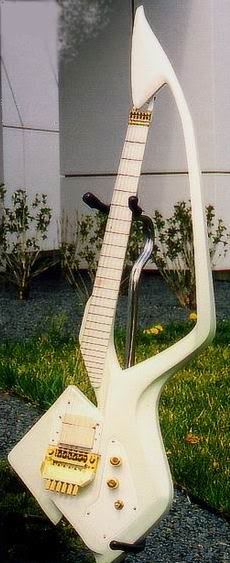 If prince.org were to be made idiot proof, someone would just invent a better idiot. | |
- E-mail - orgNote -  Report post to moderator Report post to moderator |
 If prince.org were to be made idiot proof, someone would just invent a better idiot. | |
- E-mail - orgNote -  Report post to moderator Report post to moderator |
Was this another Prince design? Fuck the funk - it's time to ditch the worn-out Vegas horns fills, pick up the geee-tar and finally ROCK THE MUTHA-FUCKER!! He hinted at this on Chaos, now it's time to step up and fully DELIVER!!
KrystleEyes 22/03/05 | |
- E-mail - orgNote -  Report post to moderator Report post to moderator |
muirdo said: Was this another Prince design?
No. It was designed by Auerswald Guitars, who specialize in the "sustain-bow", and presented to Prince. They also made the first Symbol Guitar - that was a custom, Prince-only deal. http://www.auerswald-instruments.com/ If prince.org were to be made idiot proof, someone would just invent a better idiot. | |
- E-mail - orgNote -  Report post to moderator Report post to moderator |
squirrelgrease said: muirdo said: Was this another Prince design?
No. It was designed by Auerswald Guitars, who specialize in the "sustain-bow", and presented to Prince. They also made the first Symbol Guitar - that was a custom, Prince-only deal. http://www.auerswald-instruments.com/ cheers.... 
beautiful guitars Fuck the funk - it's time to ditch the worn-out Vegas horns fills, pick up the geee-tar and finally ROCK THE MUTHA-FUCKER!! He hinted at this on Chaos, now it's time to step up and fully DELIVER!!
KrystleEyes 22/03/05 | |
- E-mail - orgNote -  Report post to moderator Report post to moderator |
squirrelgrease said: muirdo said: Was this another Prince design?
No. It was designed by Auerswald Guitars, who specialize in the "sustain-bow", and presented to Prince. They also made the first Symbol Guitar - that was a custom, Prince-only deal. http://www.auerswald-instruments.com/ If I recall correctly,the Model C guitar (by Auerswald) was a gift of Gloria von Thurn und Taxis. Funny how both Prince and she were kind of rebellious in the 80s and now they´re both very conservative. She is waaaaay more conservative than Prince though, very religious and strict these days. I know that Jerry Auerswald built the symbol guitar for Prince but what was that lawsuit with an American luthier in the 90s about? I think he was from Chicago and claimed that he designed and built that guitar first. And what, except for the whammy bar, are the main differences between the first symbol guitars in the early 90s ( golden, black and then white) and the ones that came out later? " I´d rather be a stank ass hoe because I´m not stupid. Oh my goodness! I got more drugs! I´m always funny dude...I´m hilarious! Are we gonna smoke?" | |
- E-mail - orgNote -  Report post to moderator Report post to moderator |
muirdo said: squirrelgrease said: No. It was designed by Auerswald Guitars, who specialize in the "sustain-bow", and presented to Prince. They also made the first Symbol Guitar - that was a custom, Prince-only deal. http://www.auerswald-instruments.com/ cheers.... 
beautiful guitars I've never seen this one...very nice. I really love the "Cloud." "The Lion Sleeps Tonight... | |
- E-mail - orgNote -  Report post to moderator Report post to moderator |
there's a cool picture of him holding it up over his face.
I haven't got it but I'm sure someone will spring out with it... | |
- E-mail - orgNote -  Report post to moderator Report post to moderator |
KoolEaze said: squirrelgrease said: No. It was designed by Auerswald Guitars, who specialize in the "sustain-bow", and presented to Prince. They also made the first Symbol Guitar - that was a custom, Prince-only deal. http://www.auerswald-instruments.com/ If I recall correctly,the Model C guitar (by Auerswald) was a gift of Gloria von Thurn und Taxis. Funny how both Prince and she were kind of rebellious in the 80s and now they´re both very conservative. She is waaaaay more conservative than Prince though, very religious and strict these days. I know that Jerry Auerswald built the symbol guitar for Prince but what was that lawsuit with an American luthier in the 90s about? I think he was from Chicago and claimed that he designed and built that guitar first. And what, except for the whammy bar, are the main differences between the first symbol guitars in the early 90s ( golden, black and then white) and the ones that came out later? I believe you are correct, that's the person who indeed gave Prince the guitar. The difference between the original 3(?) Symbol guitars(which underwent a couple of different paint schemes) and the later Purple Habibi/Floyd Rose guitars was that the originals were made by Auerswald and the Habibi's were made by Schecter in the US. I think the build specs were probably pretty similar for the two manufacturers - besides the tremolo. The lawsuit is broken down here: http://openjurist.org/207...t-v-prince 207 F3d 402 Ferdinand Pickett v. Prince 207 F.3d 402 (7th Cir. 2000) Ferdinand Pickett, Plaintiff-Appellant, Cross-Appellee, v. Prince, Defendant-Appellee, Cross-Appellant. Nos. 99-2770 and 99-2843 In the United States Court of Appeals For the Seventh Circuit Argued February 18, 2000 Decided March 14, 2000 Appeals from the United States District Court for the Northern District of Illinois, Eastern Division. No. 94 C 4740-- Rebecca R. Pallmeyer & Milton I. Shadur, Judges. Before Posner, Chief Judge, and Bauer and Manion, Circuit Judges. Posner, Chief Judge. 1 The appeal by Ferdinand Pickett, plaintiff in the district court, presents us with an issue concerning copyright in derivative works, while the cross-appeal, by the defendant, presents a procedural issue. The defendant, identified only as "Prince" in the caption of the various pleadings, is a well-known popular singer whose name at birth was Prince Rogers Nelson, but who for many years performed under the name Prince (which is what we'll call him) and since 1992 has referred to himself by an unpronounceable symbol reproduced as Figure 1 at the end of this opinion. (See generally "The Independent, Unofficial and Uncensored Magazine Exploring the Artist Formerly Known as Prince," .) The symbol (which rather strikingly resembles the Egyptian hieroglyph ankh, see Richard H. Wilkinson, Symbol & Magic in Egyptian Art 159, 169 (fig. 128) (1994), but the parties make nothing of this, so neither shall we) is his trademark but it is also a copyrighted work of visual art that licensees of Prince have embodied in various forms, including jewelry, clothing, and musical instruments. Although Prince did not register a copyright of the symbol until 1997, the plaintiff concedes that Prince obtained a valid copyright in 1992, registration not being a precondition to copyright protection, 17 U.S.C. sec. 408(a), though it's a precondition to a suit for copyright infringement. sec. 411(a); Raquel v. Education Mgmt. Corp., 196 F.3d 171, 176 (3d Cir. 1999). Actually the original copyright was not obtained by him, but he is the assignee, and the assignment expressly granted him the right to sue for infringement of the copyright before the assignment. 2 In 1993 the plaintiff made a guitar (Figure 2) in the shape of the Prince symbol; he concedes that it is a derivative work within the meaning of 17 U.S.C. sec. 101 ("a work based upon one or more preexisting works, such as a translation, musical arrangement, dramatization, fictionalization, motion picture version, sound recording, art reproduction, abridgment, condensation, or any other form in which a work may be recast, transformed, or adapted. A work consisting of editorial revisions, annotations, elaborations, or other modifications which, as a whole, represent an original work of authorship, is a 'derivative work'"). The plaintiff claims (truthfully, we assume for purposes of the appeal) to have shown the guitar to Prince. Shortly afterwards Prince appeared in public playing a guitar quite similar to the plaintiff's (Figure 3). 3 The plaintiff brought this suit for copyright infringement in 1994, but it languished for years in the district court. In January 1997 Prince counterclaimed for infringement of the copyright on his symbol, arguing (because he had not yet registered his copyright--indeed it hadn't even been assigned to him yet) that in 1992 Warner Brothers had registered a copyright of the symbol in connection with a record of Prince's music. Prince was mistaken; the copyright was of the music, not of the symbol, although the symbol appeared on the album cover. In any event Prince had no standing to enforce someone else's copyright--so that, if only Warner Brothers held a copyright on the Prince symbol, Prince would have no defense against Pickett's suit for infringement (or at least would not have the defense that he successfully asserted in the district court), as well as no basis for a counterclaim. In July 1997, however, on the Monday following the third anniversary of Pickett's suit (which fell on a Saturday), Prince filed an amended counterclaim for infringement, claiming that it was his own, not Warner Brothers', copyright that Pickett's guitar infringed; for between January and July Prince had obtained the copyright by assignment and had registered it. The district court (Judge Shadur) held that the amended counterclaim, which superseded the original one, did not relate back to the original counterclaim because it did not arise out of the same copyright, and so it was barred by the three-year statute of limitations for claims of copyright infringement. 17 U.S.C. sec. 507(b). Later the suit was transferred to Judge Pallmeyer, who on Prince's motion for summary judgment dismissed Pickett's claim on the ground that he had no right to make a derivative work based on the Prince symbol without Prince's consent, which was never sought or granted. 52 F. Supp. 2d 893 (N.D. Ill. 1999). 4 Pickett claims the right to copyright a work derivative from another person's copyright without that person's permission and then to sue that person for infringement by the person's own derivative work. Pickett's guitar was a derivative work of the copyrighted Prince symbol, and so was Prince's guitar. Since Prince had (or so we must assume) access to Pickett's guitar, and since the two guitars, being derivatives of the same underlying work, are, naturally, very similar in appearance, Pickett has-- if he is correct that one can copyright a derivative work when the original work is copyrighted by someone else who hasn't authorized the maker of the derivative work to copyright it--a prima facie case of infringement. Wildlife Express Corp. v. Carol Wright Sales, Inc., 18 F.3d 502, 508 (7th Cir. 1994); Procter & Gamble Co. v. Colgate- Palmolive Co., 199 F.3d 74, 77 (2d Cir. 1999) (per curiam); Castle Rock Entertainment, Inc. v. Carol Publishing Group, Inc., 150 F.3d 132, 137 (2d Cir. 1998); Twin Peaks Productions, Inc. v. Publications International, Ltd., 996 F.2d 1366, 1372 (2d Cir. 1993); see also 2 Paul Goldstein, Copyright: Principles, Law and Practice sec. 7.2.1, p. 8 (1989) ("the fact that the defendant had access to the plaintiff's work and that the defendant's work is similar to the plaintiff's can form the basis for an inference that the defendant copied her work from the plaintiff's work"). Pickett must, he concedes, show that his derivative work has enough originality to entitle him to a copyright, and also that the copyright is limited to the features that the derivative work adds to the original. But he insists that with these limitations his copyright is valid. 5 We doubt that he could show the requisite incremental originality, Lee v. A.R.T. Co., 125 F.3d 580 (7th Cir. 1997); Gracen v. Bradford Exchange, 698 F.2d 300, 304-05 (7th Cir. 1983), slight as it need be. Feist Publications, Inc. v. Rural Telephone Service Co., 499 U.S. 340, 345, 362-63 (1991); CDN Inc. v. Kapes, 197 F.3d 1256, 1259-61 (9th Cir. 1999); Acuff-Rose Music, Inc. v. Jostens, Inc., 155 F.3d 140, 143-44 (2d Cir. 1998); 1 Melville B. Nimmer & David Nimmer, Nimmer on Copyright sec. 3.03, p. 3-10 (1999); see generally 1 Goldstein, supra, sec. 2.2.1, pp. 62-65. In Lee v. A.R.T. Co., supra, 125 F.3d at 582, we noted a conflict in the authorities over whether any originality is required for a derivative work. We had explained in Gracen v. Bradford Exchange, supra, 698 F.2d at 304, and we'll note later in this opinion as well, that such a requirement is essential in order to head off situations in which it is impossible to adjudicate a dispute between owners of two derivative works because the works are identical both to the original and to each other. The Ninth Circuit, the only court cited in Lee as disagreeing with us, had, in fact, swung around to our view shortly before our decision came down. Entertainment Research Group, Inc. v. Genesis Creative Group, Inc., 122 F.3d 1211, 1220 (9th Cir. 1997). 6 Although Pickett's guitar isn't identical to the Prince symbol, the difference in appearance may well be due to nothing more than the functional difference between a two-dimensional symbol and a guitar in the shape of that symbol. In that event even Prince could not have copyrighted the guitar version of the symbol. 17 U.S.C. sec. 101; American Dental Ass'n v. Delta Dental Plans Ass'n, 126 F.3d 977, 980 (7th Cir. 1997); Entertainment Research Group, Inc. v. Genesis Creative Group, Inc., supra, 122 F.3d at 1221-24; cf. Mitel, Inc. v. Iqtel, Inc., 124 F.3d 1366, 1374-75 (10th Cir. 1997); Williams v. Crichton, 84 F.3d 581, 587-88 (2d Cir. 1996). A guitar won't work without strings, frets, etc. arranged in a pattern dictated by musical considerations, and to the extent that the pattern is what it is because otherwise the guitar won't sound right, it is not copyrightable as a work of visual art. Maybe, though, the juxtaposition of the symbol and the guitar is enough to confer on the ensemble sufficient originality as a work of visual art to entitle the designer to copyright it. See North Coast Industries v. Jason Maxwell, Inc., 972 F.2d 1031 (9th Cir. 1992); Rogers v. Koons, 960 F.2d 301, 307 (2d Cir. 1992). Many works of art rely for their effect on the juxtaposition of familiar elements ordinarily held separate (like a mustache painted on a photograph of the Mona Lisa); indeed, all works of art are ultimately combinations of familiar, uncopyrightable items. 7 We need not pursue the issue of originality of derivative works. The Copyright Act grants the owner of a copyright the exclusive right to prepare derivative works based upon the copyrighted work. 17 U.S.C. sec. 106(2); Lee v. A.R.T. Co., supra, 125 F.3d at 581; Gracen v. Bradford Exchange, supra, 698 F.2d at 302; Atari, Inc. v. North American Philips Consumer Electronics Corp., 672 F.2d 607, 618 n. 12 (7th Cir. 1982); Micro Star v. Formgen Inc., 154 F.3d 1107, 1110 (9th Cir. 1998). So Pickett could not make a derivative work based on the Prince symbol without Prince's authorization even if Pickett's guitar had a smidgeon of originality. This is a sensible result. A derivative work is, by definition, bound to be very similar to the original. Concentrating the right to make derivative works in the owner of the original work prevents what might otherwise be an endless series of infringement suits posing insoluble difficulties of proof. Consider two translations into English of a book originally published in French. The two translations are bound to be very similar and it will be difficult to establish whether they are very similar because one is a copy of the other or because both are copies of the same foreign-language original. Whether Prince's guitar is a copy of his copyrighted symbol or a copy of Pickett's guitar is likewise not a question that the methods of litigation can readily answer with confidence. If anyone can make derivative works based on the Prince symbol, we could have hundreds of Picketts, each charging infringement by the others. 8 Pickett relies for his implausible theory primarily on section 103(a) of the Copyright Act, which provides that while copyright can be obtained in derivative works, "protection for a work employing preexisting material in which copyright subsists does not extend to any part of the work in which such material has been used unlawfully." Pickett reads this as authorizing a person other than the owner of the original work to make a derivative work, merely forbidding him to infringe the original. It is very difficult to see how a derivative work not made by the owner of the original work could fail to infringe it, given the definition of derivative works. (There is no infringement by the owner of the copyright of the original work, since section 106(2) entitles him to make derivative works based on his copyrighted work. Cortner v. Israel, 732 F.2d 267, 271 (2d Cir. 1984).) Picket doesn't deny this; having warded off (he thinks) Prince's counterclaim for copyright infringement, he is unafraid to acknowledge that he is an infringer and to content himself with arguing that his copyright extends only to the original elements of the infringing work. But we do not read section 103(a) as qualifying the exclusive right of the owner of the copyright of the original work to make derivative works based on that work, the right conferred by section 106(2). Section 103(a) means only, at least so far as bears on this case, that the right to make a derivative work does not authorize the maker to incorporate into it material that infringes someone else's copyright. Cortner v. Israel, supra, 732 F.2d at 272; 1 Nimmer & Nimmer, supra, sec. 3.06, pp. 3- 34.23 to 3-34.27; cf. Harris Custom Builders, Inc. v. Hoffmeyer, 92 F.3d 517, 519 (7th Cir. 1996). So if Pickett owned a copyright of, say, a picture of Prince, and Prince used that picture in his own guitar without Pickett's consent, Pickett would have a claim of infringement. But the only copyright that Pickett claims Prince infringed is a copyright that Pickett had no right to obtain, namely a copyright on a derivative work based on Prince's copyrighted symbol. 9 Pickett relied in the district court on a dictum in Eden Toys, Inc. v. Florelee Undergarment Co., 697 F.2d 27, 34 n. 6 (2d Cir. 1982), that a stranger can make a derivative work without the permission of the owner of the copyright of the original work if the original work does not "pervade" the derivative work. The suggestion, if taken seriously (which it has not been), would inject enormous uncertainty into the law of copyright and undermine the exclusive right that section 106(2) gives the owner of the copyright on the original work. It also rests on a confusion between the determination of whether a work is derivative and the determination of who has the right to make the derivative work. Defined too broadly, "derivative work" would confer enormous power on the owners of copyrights on preexisting works. The Bernstein-Sondheim musical West Side Story, for example, is based loosely on Shakespeare's Romeo and Juliet, which in turn is based loosely on Ovid's Pyramus and Thisbe, so that if "derivative work" were defined broadly enough (and copyright were perpetual) West Side Story would infringe Pyramus and Thisbe unless authorized by Ovid's heirs. We can thus imagine the notion of pervasiveness being used to distinguish a work fairly described as derivative from works only loosely connected with some ancestral work claimed to be their original. Cf. Micro Star v. Formgen Inc., supra, 154 F.3d at 1110. In that sense Prince's symbol clearly "pervades" both guitars. If it did not, the guitars might not be derivative works, but they would not be derivative works that anyone was free to make without obtaining Prince's permission. 10 It is apparent from what we have said so far not only that Pickett could not copyright his guitar, but that his guitar infringes Prince's copyright. (Pickett's further argument, that Prince's copyright has evaporated if, as Judge Shadur ruled, the counterclaim to enforce it is time- barred and so Prince's symbol fell into the public domain and became fair game for makers of derivative works, is ridiculous.) The remaining question, whether the counterclaim was properly dismissed on the basis of the statute of limitations, is the subject of Prince's cross- appeal. Oddly, there is not the slightest doubt that the amended counterclaim was filed before the statute of limitations expired, and this regardless of whether it related back to the original, Fed. R. Civ. P. 15(c)(2), as probably it did not, since it was based on a different copyright. Cf. 6A Charles Alan Wright, Arthur R. Miller & Mary Kay Kane, Federal Practice and Procedure sec. 1497, pp. 70-74 (1990). Although the amended counterclaim was filed on the last possible day before expiration, namely the Monday after the Saturday that was the third anniversary of the filing of Pickett's suit, see Fed. R. Civ. P. 6(a), the adage that a miss is as good as a mile applies in reverse here: a suit is timely whether filed the day after the claim accrues or the very last day before the suit would be time- barred. 11 So why was the counterclaim dismissed as untimely? The three-year period of limitations began running on July 5, 1994, and the judge ruled that the counterclaim was untimely because it had not been filed until July 7, 1997. Apparently no one, including the judge, noticed that July 5, 1997, was a Saturday. Prince's lawyer finally woke up, and a couple of weeks after Judge Shadur had ruled filed a motion for reconsideration which the judge denied on the ground that a motion for reconsideration is not an appropriate vehicle for injecting a new legal theory into a case. 12 We think that in so ruling the judge abused his discretion. Unlike the case in which a judgment is sought to be vacated, to which the principle enunciated by the judge does apply, e.g., Caisse Nationale de Credit Agricole v. CBI Industries, Inc., 90 F.3d 1264, 1269-70 (7th Cir. 1996); Keene Corp. v. International Fidelity Ins. Co., 736 F.2d 388, 393 (7th Cir. 1984), although its application to a computational error having nothing to do with legal "theory" may be doubted, see Russell v. Delco Remy Division, 51 F.3d 746, 749 (7th Cir. 1995), a motion to reconsider a ruling is constrained only by the doctrine of the law of the case. And that doctrine is highly flexible, especially when a judge is being asked to reconsider his own ruling. Avitia v. Metropolitan Club of Chicago, Inc., 49 F.3d 1219, 1227 (7th Cir. 1995); Prisco v. A & D Carting Corp., 168 F.3d 593, 607 (2d Cir. 1999). Judge Shadur's ruling that the counterclaim was untimely was interlocutory, and thus not a final judgment. In fact, it was not a judgment at all. It was issued in December of 1997, and the final decision by the district court didn't come until June 18 of last year. The ruling was also the plainest of plain errors, requiring only a glance at the calendar to discover. The judge was led into the plain error by the party seeking to correct it, but that is often the case. Had Prince's lawyer discovered the error a few weeks earlier and brought it to Judge Shadur's attention before the judge ruled, undoubtedly the judge would have held that the counterclaim was timely. 13 Although we can understand Judge Shadur's annoyance at being led into plain error, a judge's refusal to correct a plain error that he had committed weeks before is not justified by the doctrine of the law of the case, or anything else we can think of. Creek v. Village of Westhaven, 144 F.3d 441, 446 (7th Cir. 1998); Evans v. City of Chicago, 873 F.2d 1007, 1013-14 (7th Cir. 1989); United States v. Zanghi, 189 F.3d 71, 79-80 (1st Cir. 1999). Were we to uphold the denial of reconsideration and dismissal of the counterclaim, we would be penalizing Prince's lawyer for having asked Judge Shadur to correct his own mistake, rather than reserving the issue for an appeal, and we would thus be discouraging efforts by litigants to purge errors before the case comes to us (perhaps it won't come to us if the errors are purged). For if Prince had for the first time on appeal argued that Judge Shadur had erred in dismissing the counterclaim as untimely, and if Pickett had responded that Prince had waived the issue by failing to raise it in the district court, Prince would have appealed to the doctrine of plain error to absolve him from the consequences of the waiver. And limited though that doctrine is in civil cases, see, e.g., Deppe v. Tripp, 863 F.2d 1356, 1360-61 (7th Cir. 1988); Smith v. Kmart Corp., 177 F.3d 19, 28 (1st Cir. 1999), we would have invoked it and reversed the dismissal of the counterclaim. The result should not be different merely because, though apprised of the error, Judge Shadur refused to correct it. 14 It is conceivable though not argued that Prince's failure to discover that July 5, 1997, was a Saturday (or to realize the significance of the fact) was harmful to Pickett; but such an argument would get nowhere, for it was as irresponsible for Pickett's lawyer to argue the untimeliness of a counterclaim that he should have known was timely as it was for Prince's lawyer to fail to refute the argument. As no effort was made to show that Pickett was harmed by Prince's mistake (and it was, to repeat, Pickett's mistake as well), let alone so gravely harmed as to warrant the dismissal of the counterclaim rather than just an order that Prince reimburse Pickett for any expense occasioned by the mistake, we cannot think of any reason at all why Judge Shadur should have refused to rescind his erroneous dismissal of the counterclaim. 15 The judgment is affirmed insofar as it dismisses Pickett's suit but vacated insofar as it dismisses the counterclaim, and the case is remanded for further proceedings consistent with this opinion. 16 Affirmed in Part, Vacated in Part, and Remanded. [Tabular or Graphical Material Omitted] If prince.org were to be made idiot proof, someone would just invent a better idiot. | |
- E-mail - orgNote -  Report post to moderator Report post to moderator |
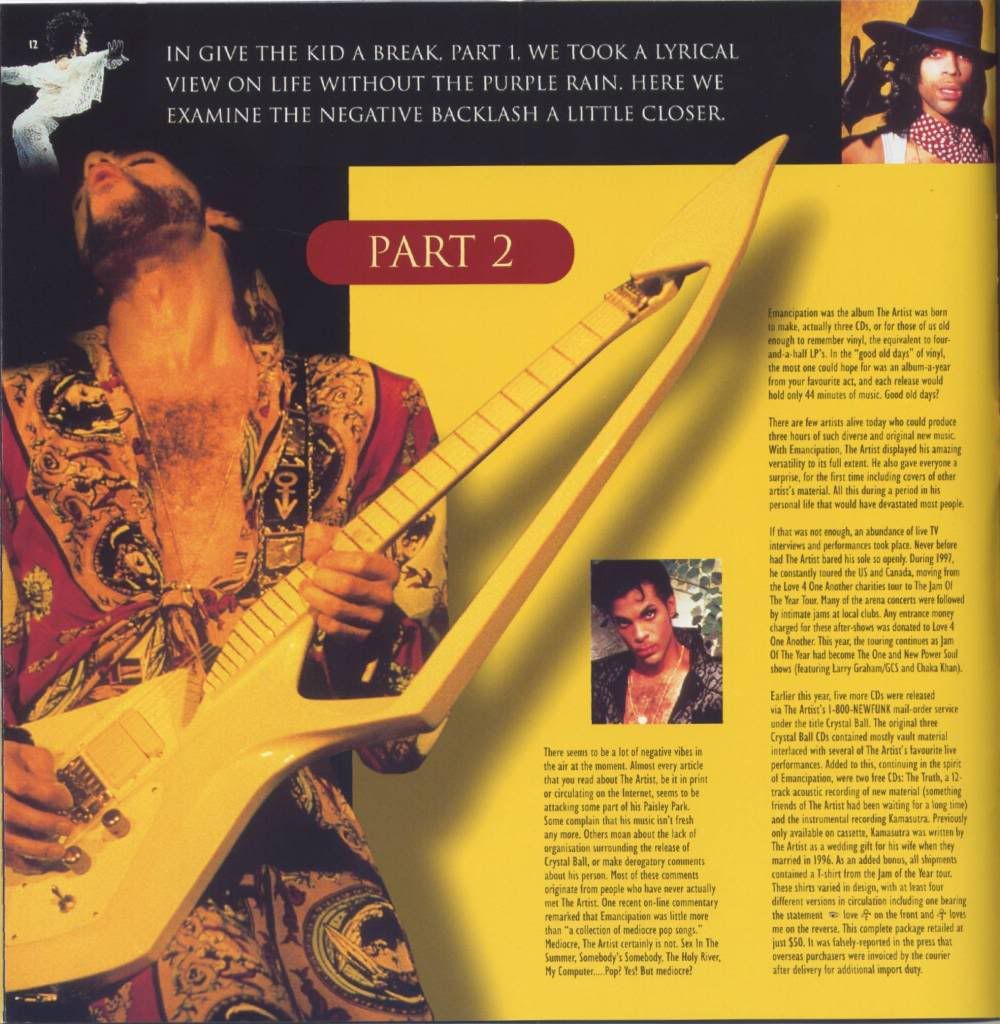 If prince.org were to be made idiot proof, someone would just invent a better idiot. | |
- E-mail - orgNote -  Report post to moderator Report post to moderator |
 If prince.org were to be made idiot proof, someone would just invent a better idiot. | |
- E-mail - orgNote -  Report post to moderator Report post to moderator |
MidasTouch said: there's a cool picture of him holding it up over his face.
I haven't got it but I'm sure someone will spring out with it... 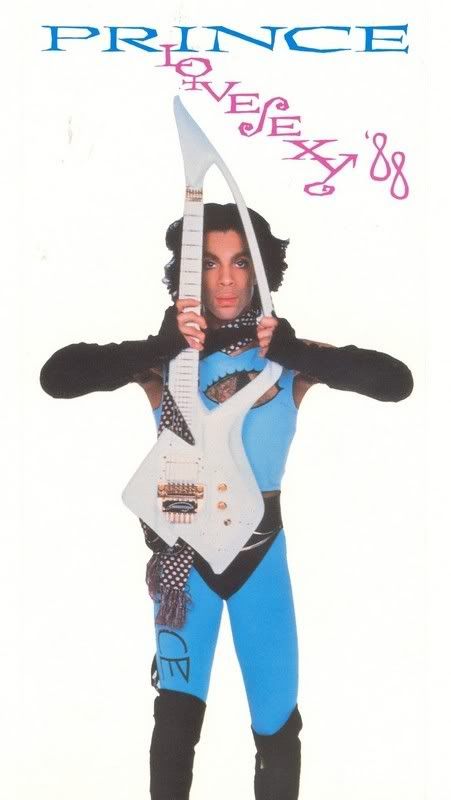 If prince.org were to be made idiot proof, someone would just invent a better idiot. | |
- E-mail - orgNote -  Report post to moderator Report post to moderator |
squirrelgrease said: MidasTouch said: there's a cool picture of him holding it up over his face.
I haven't got it but I'm sure someone will spring out with it...  Good Work, SqirrelGrease! Love this guitar and this picture! | |
- E-mail - orgNote -  Report post to moderator Report post to moderator |
squirrelgrease said: MidasTouch said: there's a cool picture of him holding it up over his face.
I haven't got it but I'm sure someone will spring out with it...  THE BEAUTIFUL ONES...  ♥ Feeling Purple Rain...Don't hold on 2 the pain, hold on 2 the memories ♥
My heart will go on...Celine Dion I will always love you...Whitney Houston | |
- E-mail - orgNote -  Report post to moderator Report post to moderator |
squirrelgrease said:  Beautiful | |
- E-mail - orgNote -  Report post to moderator Report post to moderator |
I'm sorry, but those things are hideous. | |
- E-mail - orgNote -  Report post to moderator Report post to moderator |


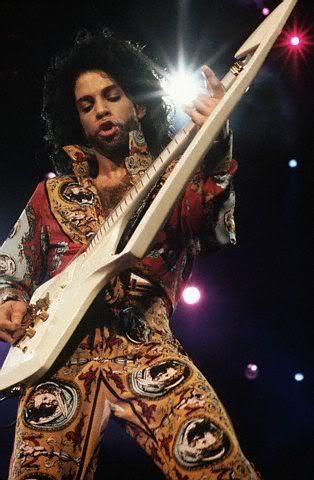

[Edited 11/6/09 12:48pm] [Edited 11/6/09 13:09pm] Prince 4Ever.  | |
- E-mail - orgNote -  Report post to moderator Report post to moderator |
Too bad the Model C guitar had a malfunction/ didn't worked on the Lovesexy Dortmund concert, the released VHS video tape from 1988...
That guitar solo in Anna Stesia would had been amazing..... Prince 4Ever.  | |
- E-mail - orgNote -  Report post to moderator Report post to moderator |
ALPHABET STREET video - a magical Model C moment.... 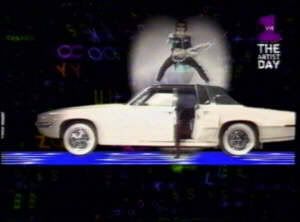
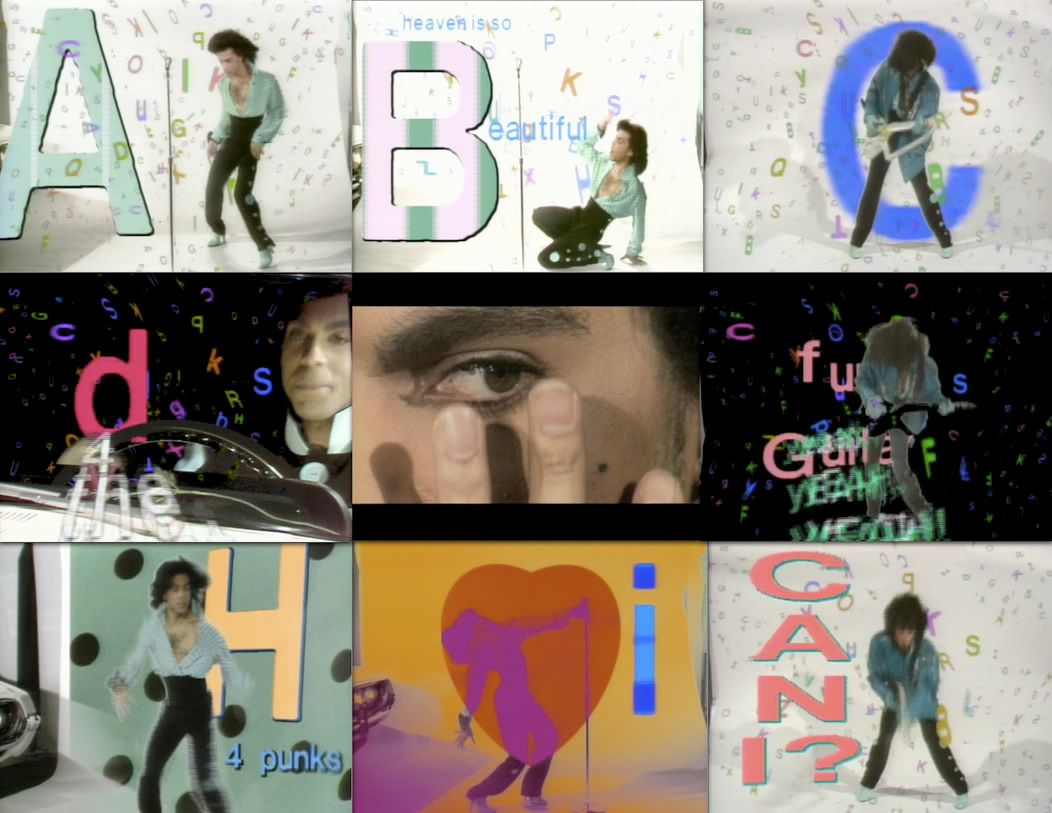 Prince 4Ever.  | |
- E-mail - orgNote -  Report post to moderator Report post to moderator |
thedance said: ALPHABET STREET video - a magical Model C moment....

 | |
- E-mail - orgNote -  Report post to moderator Report post to moderator |
I've talked about this before, but I talked with the luthier that repaired the Model C for Prince. He said the action was so high on it that it was hellish to play. This could be the reason for prince mostly abandoning it after the Nude Tour. If prince.org were to be made idiot proof, someone would just invent a better idiot. | |
- E-mail - orgNote -  Report post to moderator Report post to moderator |
squirrelgrease said: I've talked about this before, but I talked with the luthier that repaired the Model C for Prince. He said the action was so high on it that it was hellish to play. This could be the reason for prince mostly abandoning it after the Nude Tour.
ahh...I have wondered why we didn't really see it again. there was a black bass, was there not? | |
- E-mail - orgNote -  Report post to moderator Report post to moderator |
MidasTouch said: squirrelgrease said: I've talked about this before, but I talked with the luthier that repaired the Model C for Prince. He said the action was so high on it that it was hellish to play. This could be the reason for prince mostly abandoning it after the Nude Tour.
ahh...I have wondered why we didn't really see it again. there was a black bass, was there not? I'm not sure about the bass. Maybe someone has a pic. If prince.org were to be made idiot proof, someone would just invent a better idiot. | |
- E-mail - orgNote -  Report post to moderator Report post to moderator |
squirrelgrease said: MidasTouch said: ahh...I have wondered why we didn't really see it again. there was a black bass, was there not? I'm not sure about the bass. Maybe someone has a pic. My mind wants me to believe I've seen a video of him sitting at a mixing board ,slapping along to Partyman, with a black model C looking bass. | |
- E-mail - orgNote -  Report post to moderator Report post to moderator |
MidasTouch said: squirrelgrease said: I'm not sure about the bass. Maybe someone has a pic. My mind wants me to believe I've seen a video of him sitting at a mixing board ,slapping along to Partyman, with a black model C looking bass. You are correct. Just Googled the video. 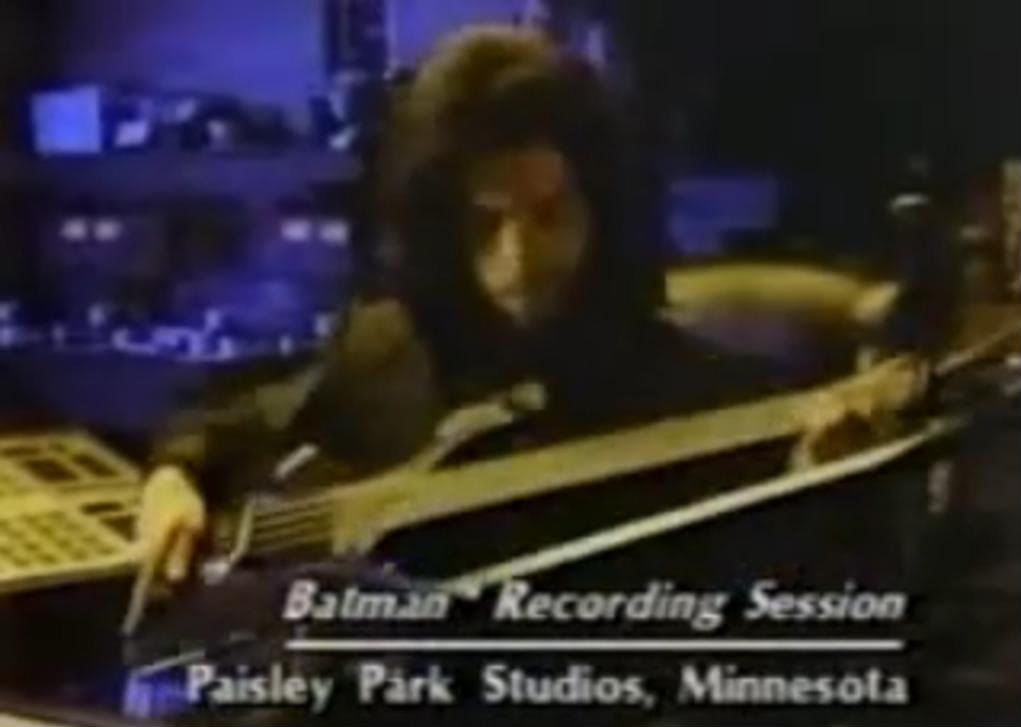
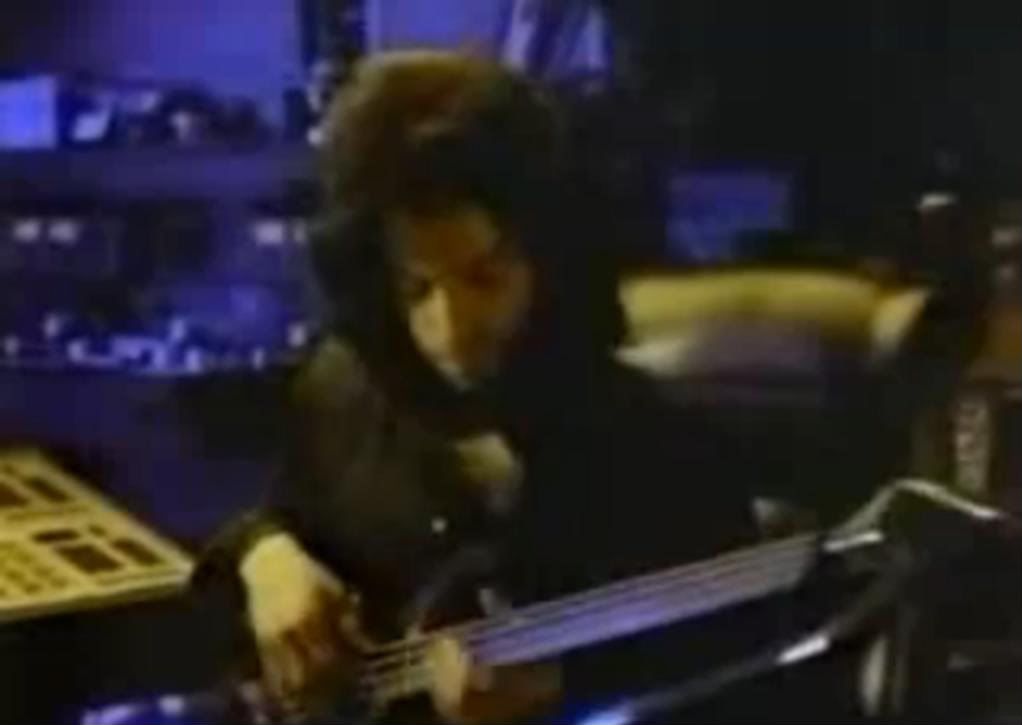
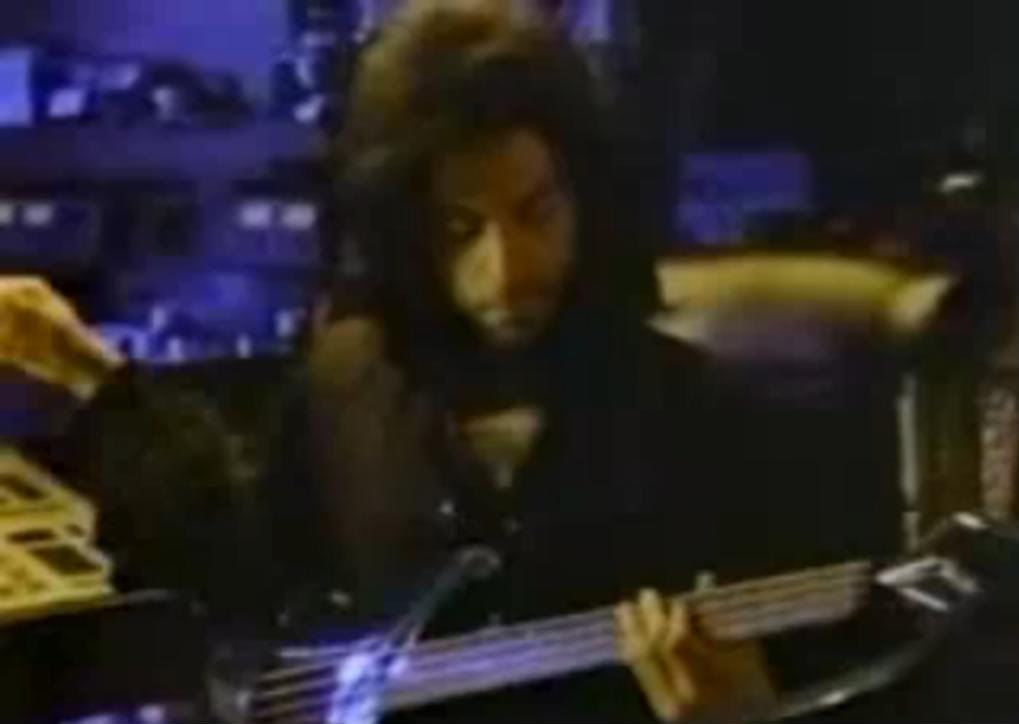
 If prince.org were to be made idiot proof, someone would just invent a better idiot. | |
- E-mail - orgNote -  Report post to moderator Report post to moderator |
^ Not sure if it's a Model C, though. The "C" has an opening cut-out just ahead of the pickups, but I can't see it on this bass. If prince.org were to be made idiot proof, someone would just invent a better idiot. | |
- E-mail - orgNote -  Report post to moderator Report post to moderator |
squirrelgrease said: ^ Not sure if it's a Model C, though. The "C" has an opening cut-out just ahead of the pickups, but I can't see it on this bass.
The bass is called the "Cleo" model... 
Sonny T played it quite often in the NPG days. [Edited 11/7/09 21:08pm] | |
- E-mail - orgNote -  Report post to moderator Report post to moderator |
 New topic
New topic Printable
Printable